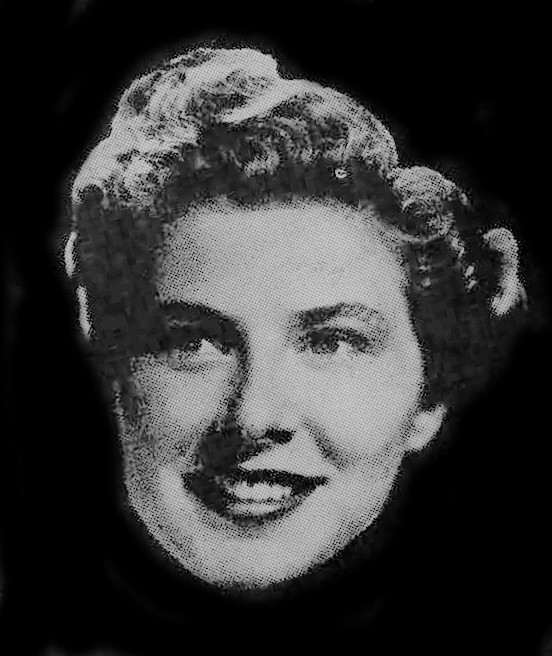Introduction
Mindy Carson is an American traditional pop singer whose career spanned from the mid 1940s until the late 1950s. The former secretary took on professional singing in the 1940s, resulting with a debut on a radio show with Paul Whiteman’s Orchestra. Her first charting was single “Rumors Are Flying” in 1946 which she performed with bandleader Harry Cool. Carson’s biggest hit was 1950s “My Foolish Heart” which reached the top 10 pop chart. She was also known to sing in occasional duets with Guy Mitchell that yielded a Top 40 hit “‘Cause I Love You That’s-A-Why.” Carson also acted and sang on Broadway, among the productions she performed in were “The Body Beautiful,” “Mary, Mary” and “Dinner At Eight.”
Radio variety show regular
One of the singers of the big band era and also a chanteuse in her own right, Mindy Carson was born in New York City, New York on July 16, 1927. By her adolescent years Carson had already been working as a secretary, until a club manager convinced her to enter a singing career. She did so, and in 1946 she auditioned for the radio program Stairway to the Stars where she eventually won.
Thus, her professional singing career had begun. Following her audition victory onStairway to the Stars, Carson made her first big splash there where she also performed with Paul Whiteman’s Orchestra and Martha Tilton who were already big stars of the program at that time. Then she moved on to another big band of Harry Cool, with whom Carson had first reached the charts with “Rumors Are Flying” (at #12 pop) in 1946.
Carson wasn’t able to follow up “Rumors Are Flying” with another hit single for the next four years. Nevertheless, Carson maintained decent radio exposure, most especially when she had her own radio variety program on CBS in the late 1940s.
Making it to television
With the advent of television, Carson was not the one to miss the chance. She jumped onto the small screen when, in 1949, she made her first TV appearance on an NBC variety show hosted by Florian ZaBach. She also appeared on the premiere broadcast of another NBC variety show The Big Show, on November 5, 1950. The program was hosted by the controversial actress/singer Tallulah Bankhead.
Solo recording career with RCA-Victor
Two-sided hits with “Candy and Cake” and “My Foolish Heart”
By that same year Carson had already been a contract artist with RCA Victor Records label. She finally scored another hit, this time with her own solo single “Candy and Cake.” Written by Bob Merrill, “Candy and Cake” reached the Top 20 pop chart at #12. The song was created following the popularity of Eileen Barton’s hit novelty tune “If I Knew You Were Coming I’d’ve Baked a Cake.”
Carson followed this up with what could be her most successful single, “My Foolish Heart” which was actually a B-side to “Candy and Cake.” “My Foolish Heart” was written by Victor Young and Ned Washington, specifically as a soundtrack of the 1949 motion picture of the same name. It was originally performed by Martha Mears.
Carson’s version of “My Foolish Heart” went to #6 on the Billboard Hot 100 in early 1950. Thus, she achieved a two-sided hit. Her other singles with RCA performed decently on the charts. They include “Bewitched” (#20 pop), “A Rainy Day Refrain” (#24 pop) and “Lonely Little Robin” (#25 pop).
Move to Columbia Records, and Carson’s stage career
When her following singles on RCA failed to crack at the charts any longer, she was dropped from the label. Carson moved to Columbia Records label sometime in 1951 or 1952. She earned a Top 40 hit with a duet with Guy Mitchell entitled “Cause I Love You That’s-A-Why.” It peaked at #26 on the pop chart. In 1955, she scored her last Top 20 hit with the ballad “Wake The Town and Tell the People” at #13 pop. Her last charting singles were her cover of Dean Martin’s “Memories Are Made of This” (1955) and her cover of Ivory Joe Hunter’s “Since I Met You, Baby,” which was also her final Top 40 hit at #34 pop in 1956.
Like many of her fellow traditional singers, Carson was swept aside by the arrival of rock and roll which had caught the ears of younger generation of listeners. She never hit the charts again and slowly faded from the scene.
In her later career Carson moved to the stage, appearing on Broadway productions The Body Beautiful (1958), Mary, Mary and Dinner at Eight.
